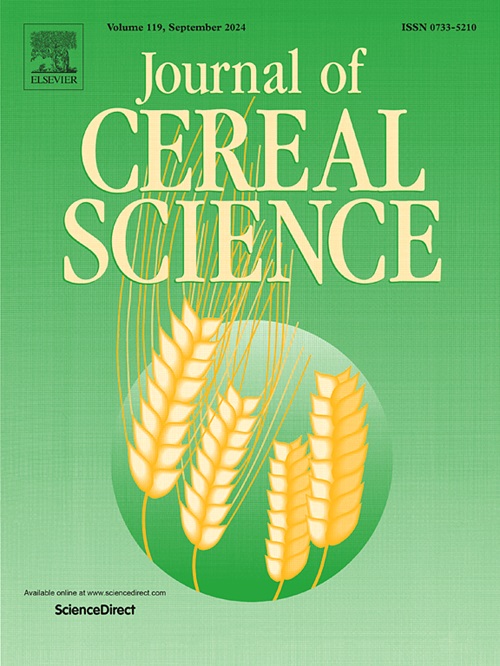Improvement of the textural properties of brown rice by magnetic field-assisted germination
IF 3.7
2区 农林科学
Q2 FOOD SCIENCE & TECHNOLOGY
引用次数: 0
Abstract
This study aimed to improve the texture of brown rice by magnetic field-assisted germination. Brown rice was germinated using magnetic field in the absence/presence of exogenous γ-aminobutyric acid, with subsequent monitoring of changes in rice texture, basic component contents, and the structure, physicochemical properties, and interactions of starch, protein, and fiber. Results indicated that the hardness of cooked brown rice decreased by 12.3 %–20.9 %, while the stickiness increased by 7.7 %–23.1 % after germination. The limited decomposition of starch during germination did not fully explain the significant changes in germinated brown rice texture; instead, alterations in dietary fiber-starch and protein-starch interactions likely played a more significant role. Changes in structure of protein, dietary fiber, and starch during germination largely reduced pasting viscosities of brown rice flour, thereby substantially enhancing the texture of cooked rice. Magnetic field improved the germination by activating hydrolases, thus showing more significant impact on the content and interactions of basic component and resulting in more enhancement of brown rice texture. Overall, this study suggested that magnetic field could be an efficient method for improving germinated brown rice texture, which provide theoretical and technical guidance for the development of high-quality brown rice products.

利用磁场辅助发芽改善糙米的质构特性
本研究旨在利用磁场辅助发芽改善糙米的质地。在没有或存在外源γ-氨基丁酸的条件下,利用磁场对糙米进行萌发,随后监测糙米的质地、基本成分含量、淀粉、蛋白质和纤维的结构、理化性质和相互作用的变化。结果表明,糙米萌发后硬度降低12.3% ~ 20.9%,粘性增加7.7% ~ 23.1%。发芽过程中淀粉的有限分解并不能完全解释发芽糙米质地的显著变化;相反,膳食纤维-淀粉和蛋白质-淀粉相互作用的改变可能发挥了更重要的作用。糙米萌发过程中蛋白质、膳食纤维和淀粉结构的变化大大降低了糙米粉的糊状粘度,从而大大提高了糙米粉的质地。磁场通过激活水解酶促进糙米萌发,从而对糙米基本组分的含量和相互作用表现出更显著的影响,从而增强糙米的质地。综上所述,本研究表明磁场是改善发芽糙米质地的有效方法,为开发优质糙米产品提供了理论和技术指导。
本文章由计算机程序翻译,如有差异,请以英文原文为准。
求助全文
约1分钟内获得全文
求助全文
来源期刊

Journal of Cereal Science
工程技术-食品科技
CiteScore
7.80
自引率
2.60%
发文量
163
审稿时长
38 days
期刊介绍:
The Journal of Cereal Science was established in 1983 to provide an International forum for the publication of original research papers of high standing covering all aspects of cereal science related to the functional and nutritional quality of cereal grains (true cereals - members of the Poaceae family and starchy pseudocereals - members of the Amaranthaceae, Chenopodiaceae and Polygonaceae families) and their products, in relation to the cereals used. The journal also publishes concise and critical review articles appraising the status and future directions of specific areas of cereal science and short communications that present news of important advances in research. The journal aims at topicality and at providing comprehensive coverage of progress in the field.
 求助内容:
求助内容: 应助结果提醒方式:
应助结果提醒方式:


